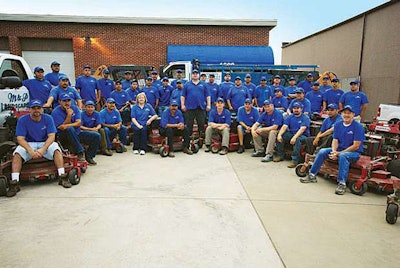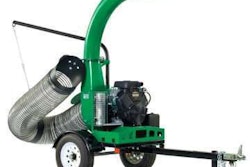
It doesn’t matter how many years you’ve been in business or how savvy your business plan is unless you have skilled, dependable employees to carry out those plans and properly represent your company. Good workers are the backbone of any successful company. Unfortunately for owners and managers in landscape businesses, hiring and retaining quality employees is one of the most challenging aspects of running a company – even in a down economy.
“There are few things that can guarantee success for a growing company more than having great employees,” says Bill Cook, owner/president of Human Resource Associates, a management-consulting firm contracted by the Professional Landcare Network (PLANET). “And there are few things that can cause a company to fail quicker than losing them.” Replacing one good employee can have a real cost, equal to one full year’s salary for that employee, Cook says.
We talked to leaders of two businesses varying in size to find out how they recruit and retain the best employees and what challenges they are facing in their fields.
All agreed money is not the No. 1 factor that attracts an individual to a job or keeps him or her there. Here’s how they hire and keep the best.
Subcontracting helps small company thrive
ART OF THE LAND
LAKEWOOD, COLORADO
5 EMPLOYEES
Finding and keeping landscape laborers is probably the hardest part of running her small, full-service landscape business, even when she pays top dollar, says Nancy Eastman, owner of Art of the Land in Lakewood, Colorado.
“Recruiting people who want to work in the field and stay with you is difficult no matter what you pay them,” Eastman says. While many of her competitors are paying crewmembers $7 an hour, she starts them at $10 an hour and bumps them up to $12 after they’ve worked for her for a few weeks. She’s even paid up to $15 an hour.
Eastman recruits most of her employees through word-of-mouth and the local Associated Landscape Contractors of Colorado (ALCC) job board. She has also hired students from nearby Colorado State University who are studying landscape architecture to work in the field. The hands-on experience benefits the students as well as the company. However, once the students get their degrees, they typically move on to office jobs where they can put their design skills to work.
It’s more challenging for a smaller company to survive employee turnover since there are fewer staff members to take up the slack when someone quits. Budgeting and planning for large projects can also be difficult with a small workforce, she says. She often found herself having to delay projects. “And clients don’t want to wait. They want immediate results.”
Her solution? She started to subcontract many of her larger jobs, such as one for St. John’s Cathedral Urban Park – a commercial project with new pavers, irrigation, plantings and a water feature. Now, she consistently works with three specialized subcontractors: one for decks and trellises, one for irrigation and plantings and one for paver work and retaining walls.
It saves her the headache of constantly recruiting and training new employees and gives her a steady supply of skilled labor she can count on for future projects. It’s a great solution for the small business owner, she says. “It allows me to do more complex projects in a short season.”
Medium-Sized Company Maximizes Downtime
RYCO LANDSCAPING
LAKE IN THE HILLS, ILLINOIS
80 EMPLOYEES
A detailed interview process and providing employees an opportunity to broaden their skill set during down time are key factors in the success of RyCo Landscaping’s employee retention program, says office manager Shannon O’Neils. Many of their employees have worked for the company for more than 10 years.
“Owners really have to look over their business for opportunities for their employees,” she says. “This business is so dependent on the weather. Instead of laying guys off, we look at downtime as an opportunity for the guys to explore other skills they can develop.”
For example, during a recent drought, employees who typically mowed spent their time with more experienced team members learning to trim.
Learning opportunities like these are win-win since they give employees steady work during slow periods, while also providing the company with cross-trained workers.
Employees are also promoted from within when possible.
Most of RyCo’s employees learned about employment opportunities with the company through word-of-mouth from friends and family members who are already part of the crew, O’Neils says.
RyCo also advertises open positions using signs posted in the office’s yard, which is situated on a high-traffic street.
Potential employees go through a detailed interview process, which includes an in-person interview and driving record and reference checks.
“We really want them to be part of the team and not just feel like this is a job,” O’Neils says.









